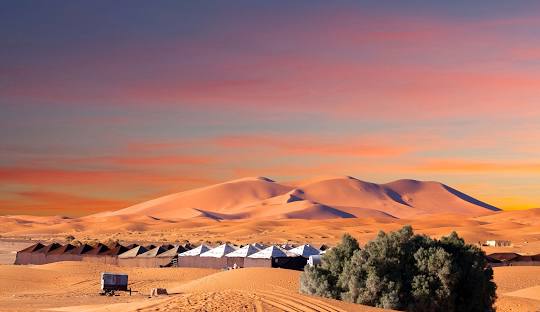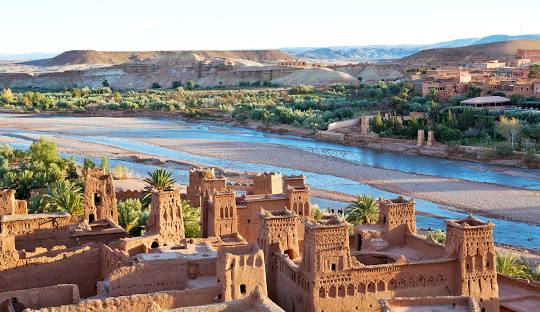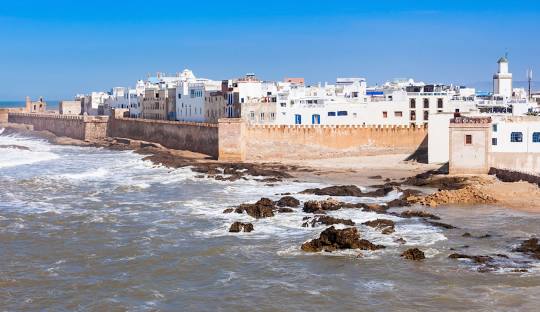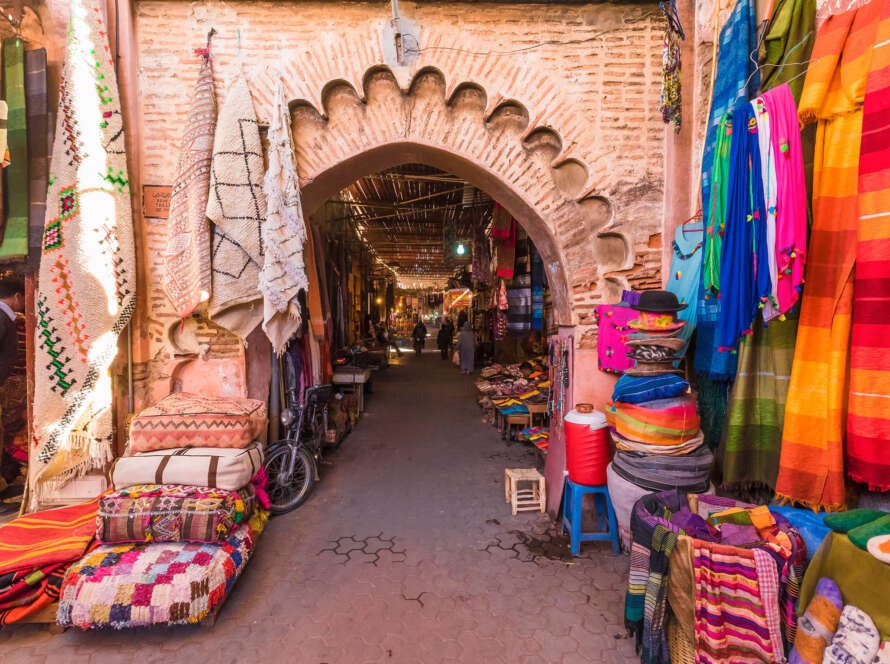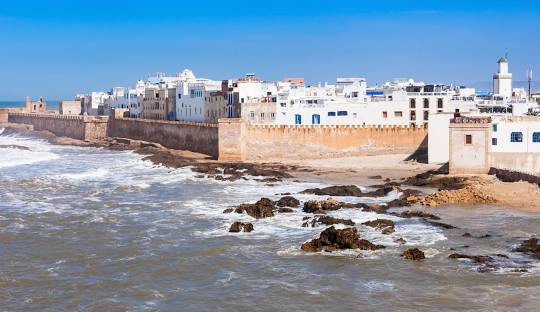Landscape of Morocco bridges the Atlantic and Mediterranean, where the Sahara Desert meets the High Atlas Mountains, offering a landscape as rich and diverse as its history. This North African nation is steeped in ancient cultures and influenced by multiple civilizations.
Landscape of Morocco
Landscape of Morocco presents a tapestry of natural wonders, from sprawling deserts to lush oases and rugged coastlines to serene mountain valleys. The Sahara Desert, the world’s largest hot desert, covers a significant portion of southeastern Morocco.
Here, one can witness an endless sea of dunes, especially in the Erg Chebbi and Erg Chigaga areas. These massive golden sand hills change colors with the daylight, from deep orange to pink and even purple at sunset, creating a mesmerizing natural spectacle.
Indeed the Sahara is a famous landscape of Morocco, punctuated by several oases where life clings to precious water sources, allowing for the cultivation of dates and providing refuge for travelers and locals alike.
Moving north, the Atlas Mountains stretch across Morocco, acting as a natural barrier between the Sahara and the country’s more temperate coastal regions. The High Atlas, Middle Atlas, and Anti-Atlas each offer unique landscapes and climates.
Indeed another famous landscape of Morocco is the High Atlas, home to Toubkal, North Africa’s highest peak, characterized by its rugged terrain, snow-capped mountains, and remote Berber villages.
Its valleys, particularly the Ourika and Dades, are fertile and green, contrasting sharply with the arid lands to the south. The Middle Atlas, cooler and wetter, is known for its cedar forests, lakes, and waterfalls, like those near Ifrane, often referred to as Morocco’s Switzerland.
This is due to its alpine-style architecture and snow during winter. The Anti-Atlas, another landscape of Morocco, is extending to the southwestern coast, less visited but equally stunning, with ancient kasbahs and dramatic gorges cutting through the land, and unique geological formations.
This area is also known for argan trees, from which the precious argan oil is derived, a product unique to the Kingdom. Morocco’s coastlines offer yet another layer of diversity. The Atlantic coast, with its long, sandy beaches, is rugged and wild in places like Essaouira.
In this city, the wind ensures it is a haven for surfers and kiteboarding enthusiasts. Northwards the landscape of Morocco, Casablanca and Rabat boast more urbanized seashores, where modernity and tradition blend seamlessly.
The Mediterranean coast, especially around the Rif Mountains, is characterized by its tranquil beaches, small fishing villages, and the striking blue town of Chefchaouen, nestled in the mountains, providing a peaceful retreat from the bustling cities.
The Rif Mountains, though less towering than the Atlas, offer lush landscapes, with forests of fir, pine, cedar, hidden caves and waterfalls. This region is culturally distinct, with its own customs and languages, adding to the rich tapestry of Morocco’s diverse landscapes.
Inland, the imperial cities of Fez, Marrakech, Meknes, and Rabat are surrounded by fertile plains and olive groves, testament to Morocco’s agricultural heritage. These cities, with their ancient medinas, palaces, and mosques, are not just urban landscapes but historical artifacts themselves.
They tell the story of Morocco’s long and varied history. Morocco’s lesser-known interior, the oases and valleys such as the Draa and Ziz, offer a glimpse into the country’s heartland. Here, life revolves around the seasonal rivers that snake through the desert, creating ribbons of greenery.
This sustains both the agriculture and the centuries-old settlements along their banks. Morocco’s landscape is a reflection of its complex history and cultural diversity, from the desolate beauty of the Sahara to the bustling life of its coastal cities.
The country offers a myriad of landscapes that are as varied as they are stunning. Each region, with its unique geography and climate, contributes to the mosaic that is Morocco, making it a fascinating destination for travelers seeking both natural beauty and cultural richness.

